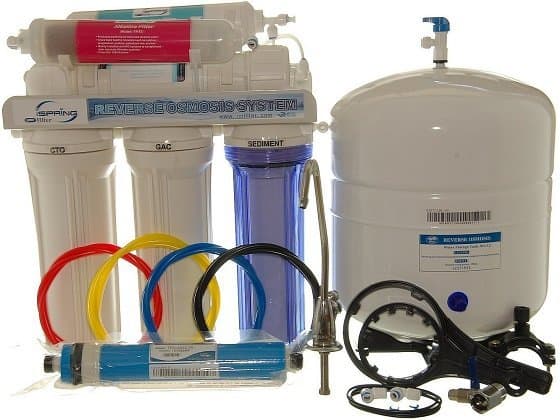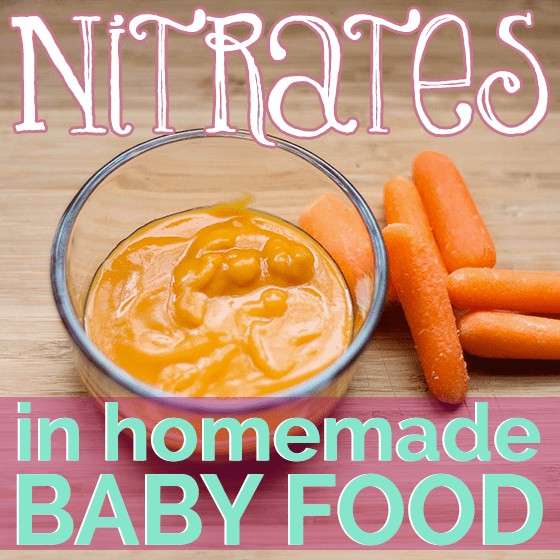There is a growing trend to avoid foods like hot dogs, bacon, and other cured items because, although they may be delicious, the nitrates found in these foods can be dangerous. While these are synthetic food preservatives, nitrates can be found in your real food diet as well.
Infants are at risk for methemoglobinemia, also known as Blue Baby Syndrome, as a result of nitrate poisonings. Nitrates can be found in many common vegetables and in well water supplies. These nitrates are found in food thanks to nitrogen-based fertilizer and farm run-off into local water supplies. Infants who are exposed to these vegetables at a young age are at risk of nitrate poisoning. Making formula with nitrate contaminated well water is also a very common source of exposure.
Do not believe that store-bought baby food is completely nitrate free, they simply check to make sure the nitrates do not go above an acceptable level.
“The potential hazard of nitrate in either food or water is from its conversion to methemoglobin-producing nitrites before and/or after ingestion. The nitrite ion oxidizes ferrous iron in hemoglobin to the ferric state. The resulting compound, methemoglobin, is incapable of binding molecular oxygen and produces a leftward shift in the oxygen-dissociation curve, which results in hypoxemia. Absorbed nitrate that has not been converted to nitrite can be readily excreted in the urine without adverse effects. (1)
There are many factors that influence the incidence of methemoglobinemia in infancy. (1 ,2) The gastric pH of infants is higher than that in older children and adults, with resultant proliferation of intestinal flora that can reduce the ingested nitrate to nitrite. Fetal hemoglobin, the predominant form in infants up to 3 months of age, is oxidized more readily to methemoglobin by nitrite than is adult hemoglobin.”-The American Association of Pediatrics (3)
Symptoms of Blue Baby Syndrome
Symptoms of methemoglobinemia include: blueish tint of the skin, fatigue, headache, and shortness of breath.

Why This Is A Concern:
This most specifically concerns infants 3 months and younger. But to be safe, avoid carrots, beets, spinach, green beans, turnips, collard greens, and squash until you’re little one is 6 months or older. The AAP does not recommend started solids until 6 months of age, but not every family chooses to follow this rule. The chances of an infant older than 3 months getting nitrate poisoning are very slim. But, we believe that even small exposures to toxic things can have an effect over time. So, it makes sense to lower these exposures when possible.
“It is estimated that 2 million families drink water from private wells that fail to meet the federal drinking-water standard for nitrate, and 40000 infants younger than 6 months live in homes that have nitrate-contaminated water supplies.”- The American Association of Pediatrics (3)

What You Can Do:
- When making purees, do not use the pan water from steaming the vegetables. Many of the nitrates are removed in the steaming process, so just add in fresh water when it is time to puree!
- Have your home well water supply tested. The nitrate level should be <10 ppm. If the supply has a high level, remove the nitrates with a reverse osmosis or ion exchange resin purification systems.
- Avoid root vegetables until 6-8 months of age.
- According to the AAP, nitrates of up to 100ppm do not affect the mother’s breast milk. So , while you should monitor what is safe for your consumption, don’t be overly concerned with your intake affecting your baby.
While the possibility of Blue Baby Syndrome is slim, it will give you some peace of mind to have your well water checked and to avoid a few vegetables until your little one is old enough to handle them. Why expose your infant to nitrates if they can be avoided with a few simple changes?
![]()
Photo Credits: Amanda A., Steven Depolo
Source:
- https://pediatrics.aappublications.org/content/116/3/784.full#ref-14
- https://pediatrics.aappublications.org/content/116/3/784.full#ref-17
- HealthyChild.org
- Infant Methemoglobinemia: The Role of Dietary Nitrate in Food and Water









































Dear Amanda,
I think it is an important topic, but I find your article VERY confusing and lacking in any kind of structure. So, apart from not starting solids till 6mo, can be done to prevent this? If the poisoning after age of 6mo is very rare, then what is the real problem here? Sorry, but if you are going to bring up serious issues like this, then please take the time to structure your thoughts and what it is you are aiming to convey a little more clearly!!! Thank you. NOTE: I am not trying to be spiteful – in fact I am a regular reader – it is just I though that this article was a little bit of a waste of an important topic.
Irina,
Thanks for your comment! We specifically included the “what you can do” section that deals with the steps that you can take to reduce the exposure. Many parents start solids before 6 months, so it’s simply something to be aware of.
This post was meant as an introduction to the issue for those who weren’t aware of it. Aside from what was mentioned, not much can be done. Finally, while children over 6 months don’t tend to get blue baby syndrome, having nitrates in their foods is still not desirable and we feel strongly that parent’s need to be educated and informed about what is in their food- especially when it portrays to what they are feeding their babies.
I’m curious…would the high nitrate levels be found in these same vegetables if they are organically grown?
What if the root veggies are homegrown?
Hi Erin! The nitrogen found in fertilizers is the culprit for the high levels. Buying organic, meaning these fertilizers would not be used, would definitely make a big difference!
Elizabeth,
I would suggest growing the veggies organically since the nitrogen in fertilizers can be to blame for the high levels. If you are worried about the soil in your yard you could always plant in a raised garden and most root veggies do well in containers, too. Great question!